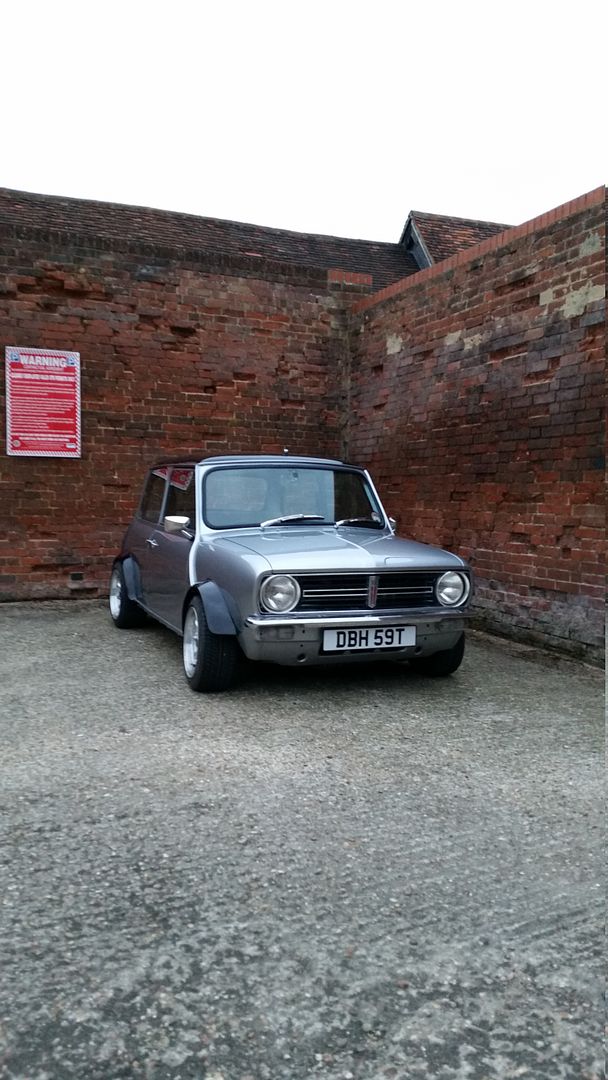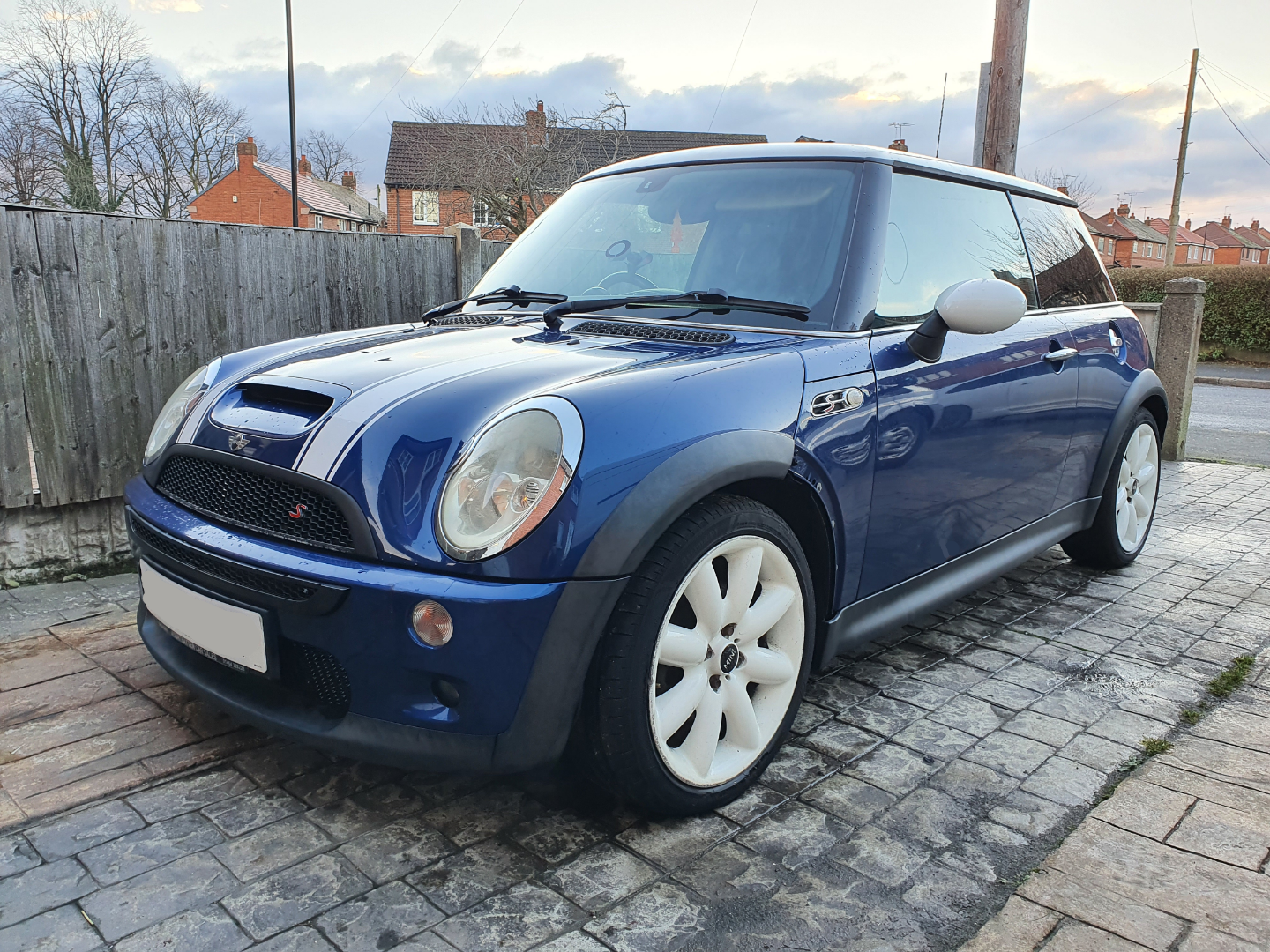| Page: |
| Home > FAQ / Knowledge > how a turbo hif works? | |||||||
|
32 Posts Member #: 10958 Member |
7th Feb, 2016 at 07:56:05pm
Just wondered, when the trottle is opened and compressed/charged air comes through is the air after the throttle still a vacuum. Cause how I understood forced induction is that the air/fuel mixture is forced into the cylinders, so that would be a positive pressure, but if that is the case how does the fuel get drawn through? Doesn't that rely on vacuum to draw fuel through the jet ? Or is it still the case that compressed air/ fuel mixture is still being sucked/drawn into the engine?
|
||||||
 2742 Posts Member #: 637 Post Whore Hertfordshire |
7th Feb, 2016 at 08:10:37pm
Pretty sure the carb sees boost as the turbo carbs need to be sealed differently. My build thread..
|
||||||
|
32 Posts Member #: 10958 Member |
7th Feb, 2016 at 08:26:03pm
Thats what I dont understand, yes the carb sees boost, but hif44 carbs rely on vacuum to draw fuel through the jet. |
||||||
|
9258 Posts Member #: 123 Post Whore Betwix Harrogate and York |
7th Feb, 2016 at 08:26:55pm
Simples. The float bowl is pressureised around 3psi above the venturi. So fuel is drawn through owing to the pressure differance.
Fastest 998 mini in the world? 13.05 1/4 mile 106mph
On 2nd Jan, 2013 fastcarl said:
the design shows a distinct lack of imagination, talk about starting off with a clean sheet of paper, then not bothering to fucking draw on it,lol On 20th Apr, 2012 Paul S said:
I'm mainly concerned about swirl in the runners caused by the tangential entry. |
||||||
 11046 Posts Member #: 965 Post Whore Preston On The Brook |
8th Feb, 2016 at 12:10:13am
On 7th Feb, 2016 HUBBA.HUBBA said:
Thats what I dont understand, yes the carb sees boost, but hif44 carbs rely on vacuum to draw fuel through the jet. Vacuum is a 'measure' of lower than atmospheric pressure. The SU carb principle is that it works on pressure difference and venturi effect, rather than the requirement to have a vacuum. In a boosted application, the restrictor ring in the plenum under boost creates slight pressure drop, which allows the float chamber to have a slightly higher pressure than the main choke of the carb where the mouth of the jet is situated, so under boost fuel is 'pushed' out of the jet, not just relying on venturi effect alone, to compensate for the increase in density of the air. As more air mass flows through any given restriction the pressure drop increases. Ergo, increase the boost (more mass air flow), the restrictor in the plenum creates a higher pressure drop, thus pushes more fuel out the jet. On 26th Oct, 2004 TurboDave16v said:
Is it A-Series only? I think it should be... So when some joey comes on here about how his 16v turbo vauxhall is great compared to ours, he can be given the 'bird'... On 26th Oct, 2004 Tom Fenton said:
Yep I agree with TD........ |
||||||
|
389 Posts Member #: 9751 Senior Member Derbyshire |
8th Feb, 2016 at 06:23:08am
The bernoulli principle.
|
||||||
|
32 Posts Member #: 10958 Member |
8th Feb, 2016 at 08:37:43am
Thats grest. Cheers all |
||||||
 11046 Posts Member #: 965 Post Whore Preston On The Brook |
8th Feb, 2016 at 02:08:57pm
On 8th Feb, 2016 mossy2a said:
The fuel is not pushed out of the jet. The positive pressure in the float bowl is to give the same delta p (pressure drop) over the inlet and suction. What's the restrictor for then? If not to increase enrichment with increase in air density (boost) Float chamber pressure will be higher under boost than in the main choke, ergo the Delta P will increase with boost. On 26th Oct, 2004 TurboDave16v said:
Is it A-Series only? I think it should be... So when some joey comes on here about how his 16v turbo vauxhall is great compared to ours, he can be given the 'bird'... On 26th Oct, 2004 Tom Fenton said:
Yep I agree with TD........ |
||||||
|
389 Posts Member #: 9751 Senior Member Derbyshire |
8th Feb, 2016 at 04:20:02pm
I design venturis for multi phase streams for a living
|
||||||
|
9258 Posts Member #: 123 Post Whore Betwix Harrogate and York |
8th Feb, 2016 at 04:35:32pm
On 8th Feb, 2016 mossy2a said:
The fuel is not under higher pressure than the upstream motive pressure. Half your comments I will agree with. What's the 'upstream motive pressure'? I'm pretty sure the fuel is at a higher pressure in the float bowl than through the carb in a turbo application. Much like it is when in NA (it's all relative of course, no reference pressure, but fuel must go from high to low pressure). The pressure in the carb in the turbo application is not just about the flow through the carb, it's also affected by the plenum restrictor. You don't need the restrictor. You can just pressurise the float bowl with a signal from a higher pressure point in the intake system; such as before the the IC. But you'll need a greater pressure difference Edited by wil_h on 8th Feb, 2016. Fastest 998 mini in the world? 13.05 1/4 mile 106mph
On 2nd Jan, 2013 fastcarl said:
the design shows a distinct lack of imagination, talk about starting off with a clean sheet of paper, then not bothering to fucking draw on it,lol On 20th Apr, 2012 Paul S said:
I'm mainly concerned about swirl in the runners caused by the tangential entry. |
||||||
 9502 Posts Member #: 1023 Post Whore Doncaster, South Yorkshire |
8th Feb, 2016 at 05:12:56pm
The fuel will be higher than the plenum pressure pre restrictor by what ever you set it to at idle
Yes i moved to the darkside |
||||||
|
389 Posts Member #: 9751 Senior Member Derbyshire |
8th Feb, 2016 at 05:40:11pm
upstream motive pressure = air inlet in this case. the main energy source in the venturi calculation.
On 8th Feb, 2016 wil_h said:
On 8th Feb, 2016 mossy2a said:
The fuel is not under higher pressure than the upstream motive pressure. Half your comments I will agree with. What's the 'upstream motive pressure'? I'm pretty sure the fuel is at a higher pressure in the float bowl than through the carb in a turbo application. Much like it is when in NA (it's all relative of course, no reference pressure, but fuel must go from high to low pressure). The pressure in the carb in the turbo application is not just about the flow through the carb, it's also affected by the plenum restrictor. You don't need the restrictor. You can just pressurise the float bowl with a signal from a higher pressure point in the intake system; such as before the the IC. But you'll need a greater pressure difference |
||||||
|
9258 Posts Member #: 123 Post Whore Betwix Harrogate and York |
8th Feb, 2016 at 06:05:15pm
On 8th Feb, 2016 mossy2a said:
The fuel cannot be at a higher pressure than the inlet or back flow will occur. Fastest 998 mini in the world? 13.05 1/4 mile 106mph
On 2nd Jan, 2013 fastcarl said:
the design shows a distinct lack of imagination, talk about starting off with a clean sheet of paper, then not bothering to fucking draw on it,lol On 20th Apr, 2012 Paul S said:
I'm mainly concerned about swirl in the runners caused by the tangential entry. |
||||||
 11046 Posts Member #: 965 Post Whore Preston On The Brook |
8th Feb, 2016 at 06:15:04pm
So if the restrictor, or for that matter a pitot tube, does nothing to increase the float chamber pressure, why have them? You would simply connect the float chamber to the 'inlet' air pressure at the throat of the carb.
On 26th Oct, 2004 TurboDave16v said:
Is it A-Series only? I think it should be... So when some joey comes on here about how his 16v turbo vauxhall is great compared to ours, he can be given the 'bird'... On 26th Oct, 2004 Tom Fenton said:
Yep I agree with TD........ |
||||||
 3673 Posts Member #: 9300 Post Whore Quarry Bonk |
8th Feb, 2016 at 07:39:56pm
A turbo carb works along with a plenum and turbo fuel pressure regulator to create a pressure differential, ensuring that the fuel is at a slightly higher pressure than boost pressure at all times. It's very very basic stuff. A pitot tube instead of a plenum mainly uses pressure waves instead of just a restricion. Used on a lot of turbocharged bikes. Don't try and overcomplicate it with fancy stuff, it is what it is, and it simply works, and works well! On 26th Jan, 2012 Tom Fenton said:
ring problems are down to wear or abuse but although annoying it isn't a show stopper On 5th Aug, 2014 madmk1 said:
Shit the bed! I had snapped the end of my shaft off!! 17.213 @ 71mph, 64bhp n/a (Old Engine) |
||||||
|
806 Posts Member #: 989 Post Whore North Yorkshire |
8th Feb, 2016 at 08:15:47pm
The fuel pressure regulator serves one purpose - to ensure fuel is at a high enough pressure to be able to enter the float chamber. It has no influence over float chamber pressure, and does not help fuel to be drawn up the jet. |
||||||
 3673 Posts Member #: 9300 Post Whore Quarry Bonk |
8th Feb, 2016 at 08:49:28pm
If it didn't reference pressure from the plenum, then it wouldn't be able to provide sufficient pressure to fill the float bowl with fuel, so its part of the system as a package. On 26th Jan, 2012 Tom Fenton said:
ring problems are down to wear or abuse but although annoying it isn't a show stopper On 5th Aug, 2014 madmk1 said:
Shit the bed! I had snapped the end of my shaft off!! 17.213 @ 71mph, 64bhp n/a (Old Engine) |
||||||
| Home > FAQ / Knowledge > how a turbo hif works? | |||||||
|
|||||||
| Page: |

